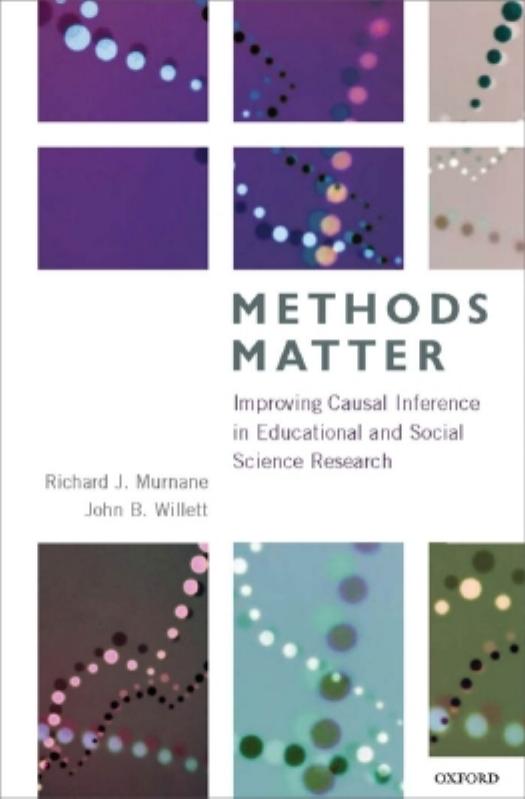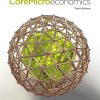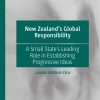Methods Matter Improving Causal Inference in Educational and Social Science Research 1st edition by Richard Murnane, John Willett 9780199890156 0199890153
$70.00 Original price was: $70.00.$35.00Current price is: $35.00.
Instant download Methods Matter Improving Causal Inference in Educational and Social Science Research Murnane Richard J. Willett John B after payment
Methods Matter Improving Causal Inference in Educational and Social Science Research 1st edition by Richard J. Murnane, John B. Willett – Ebook PDF Instant Download/Delivery:9780199890156, 0199890153
Full dowload Methods Matter Improving Causal Inference in Educational and Social Science Research 1st edition after payment

Product details:
• ISBN 10:0199890153
• ISBN 13:9780199890156
• Author:Richard J. Murnane, John B. Willett
Methods Matter
Improving Causal Inference in Educational and Social Science Research
Methods Matter Improving Causal Inference in Educational and Social Science Research 1st Table of contents:
1 The Challenge for Educational Research
The Long Quest
The Quest Is Worldwide
What This Book Is About
What to Read Next
2 The Importance of Theory
What Is Theory?
Theory in Education
Voucher Theory
What Kind of Theories?
What to Read Next
3 Designing Research to Address Causal Questions
Conditions to Strive for in All Research
Making Causal Inferences
Past Approaches to Answering Causal Questions in Education
The Key Challenge of Causal Research
What to Read Next
4 Investigator-Designed Randomized Experiments
Conducting Randomized Experiments
The Potential Outcomes Framework
An Example of a Two-Group Experiment
Analyzing Data from Randomized Experiments
The Better Your Research Design, the Simpler Your Data Analysis
Bias and Precision in the Estimation of Experimental Effects
What to Read Next
5 Challenges in Designing, Implementing, and Learning from Randomized Experiments
Critical Decisions in the Design of Experiments
Defining the Treatment
Defining the Population from Which Participants Will Be Sampled
Deciding Which Outcomes to Measure
Deciding How Long to Track Participants
Threats to the Validity of Randomized Experiments
Contamination of the Treatment-Control Contrast
Cross-overs
Attrition from the Sample
Participation in an Experiment Itself Affects Participants’ Behavior
Gaining Support for Conducting Randomized Experiments: Examples from India
Evaluating an Innovative Input Approach
Evaluating an Innovative Incentive Policy
What to Read Next
6 Statistical Power and Sample Size
Statistical Power
Reviewing the Process of Statistical Inference
Defining Statistical Power
Factors Affecting Statistical Power
The Strengths and Limitations of Parametric Tests
The Benefits of Covariates
The Reliability of the Outcome Measure Matters
The Choice Between One-Tailed and Two-Tailed Tests
What to Read Next
7 Experimental Research When Participants Are Clustered Within Intact Groups
Random-Intercepts Multilevel Model to Estimate Effect Size When Intact Groups Are Randomized to Experimental Conditions
Statistical Power When Intact Groups of Participants Are Randomized to Experimental Conditions
Statistical Power of the Cluster-Randomized Design and Intraclass Correlation
Fixed-Effects Multilevel Models to Estimate Effect Size When Intact Groups of Participants Are Randomized to Experimental Conditions
Specifying a Fixed-Effects Multilevel Model
Choosing Between Random-and Fixed-Effects Specifications
What to Read Next
8 Using Natural Experiments to Provide “Arguably Exogenous” Treatment Variability
Natural-and Investigator-Designed Experiments: Similarities and Differences
Two Examples of Natural Experiments
The Vietnam-Era Draft Lottery
The Impact of an Offer of Financial Aid for College
Sources of Natural Experiments
Choosing the Width of the Analytic Window
Threats to Validity in Natural Experiments with a Discontinuity Design
Accounting for the Relationship Between the Outcome and the Forcing Variable in a Discontinuity Design
Actions by Participants Can Undermine Exogenous Assignment to Experimental Conditions in a Natural Experiment with a Discontinuity Design
What to Read Next
9 Estimating Causal Effects Using a Regression-Discontinuity Approach
Maimonides’ Rule and the Impact of Class Size on Student Achievement
A Simple First-Difference Analysis
A Difference-in-Differences Analysis
A Basic Regression-Discontinuity Analysis
Choosing an Appropriate Bandwidth
Generalizing the Relationship Between the Outcome and the Forcing Variable
Specification Checks UsingPseudo-OutcomesandPseudo-Cut-offs
Regression-Discontinuity Designs and Statistical Power
Additional Threats to Validity in a Regression-Discontinuity Design
What to Read Next
10 Introducing Instrumental-Variables Estimation
Introducing Instrumental-Variables Estimation
Bias in the OLS Estimate of the Causal Effect of Education on Civic Engagement
Instrumental-Variables Estimation
Two Critical Assumptions That Underpin Instrumental-Variables Estimation
Alternative Ways of Obtaining the Instrumental-Variables Estimate
Obtaining an Instrumental-Variables Estimate by the Two-Stage Least-Squares Method
Obtaining an Instrumental-Variables Estimate by Simultaneous-Equations Estimation
Extensions of the Basic Instrumental-Variable Estimation Approach
Incorporating Exogenous Covariates into Instrumental-Variable Estimation
Incorporating Multiple Instruments into the First-Stage Model
Examining the Impact of Interactions Between the Endogenous Question Predictor and Exogenous Covariates in the Second-Stage Model
Choosing Appropriate Functional Forms for Outcome/Predictor Relationships in First-and Second-Stage Models
Finding and Defending Instruments
Proximity of Educational Institutions
Institutional Rules and Personal Characteristics
Deviations from Cohort Trends
The Search Continues
What to Read Next
11 Using IVE to Recover the Treatment Effect in a Quasi-Experiment
The Notion of a “Quasi-Experiment”
Using IVE to Estimate the Causal Impact of a Treatment in a Quasi-Experiment
Further Insight into the IVE (LATE) Estimate, in the Context of Quasi-Experimental Data
Using IVE to Resolve “Fuzziness” in a Regression-Discontinuity Design
What to Read Next
12 Dealing with Bias in Treatment Effects Estimated from Nonexperimental Data
Reducing Observed Bias by the Method of Stratification
Stratifying on a Single Covariate
Stratifying on Covariates
Reducing Observed Bias by Direct Control for Covariates Using Regression Analysis
Reducing Observed Bias Using a Propensity-Score Approach
Estimation of the Treatment Effect by Stratifying on Propensity Scores
Estimation of the Treatment Effect by Matching on Propensity Scores
Estimation of the Treatment Effect by Weighting by the Inverse of the Propensity Scores
A Return to the Substantive Question
What to Read Next
13 Methodological Lessons from the Long Quest
Be Clear About Your Theory of Action
Learn About Culture, Rules, and Institutions in the Research Setting
Understand the Counterfactual
Always Worry About Selection Bias
Use Multiple Outcome Measures
Be on the Lookout for Longer-Term Effects
Develop a Plan for Examining Impacts on Subgroups
Interpret Your Research Results Correctly
Pay Attention to Anomalous Results
Recognize That Good Research Always Raises New Questions
What to Read Next
14 Substantive Lessons and New Questions
Policy Guideline 1: Lower the Cost of School Enrollment
Reduce Commuting Time
Reduce Out-of-Pocket Educational Costs
Reduce Opportunity Costs
Policy Guideline 2: Change Children’s Daily Experiences in School
More Books?
Smaller Classes?
Better Teaching?
Policy Guideline 3: Improve Incentives
Improve Incentives for Teachers
Improve Incentives for Students
Policy Guideline 4: Create More Schooling Options for Poor Children
New Private-School Options
New Public-School Options
Summing Up
Final Words
References
People also search for Methods Matter Improving Causal Inference in Educational and Social Science Research 1st:
methods matter improving causal
methods matter
methods for causal inference
causal method
causal research methods


